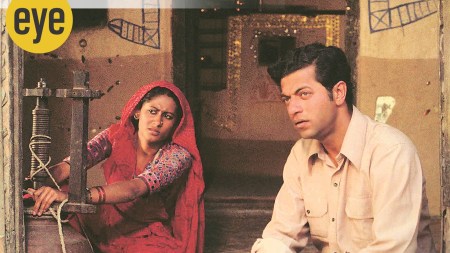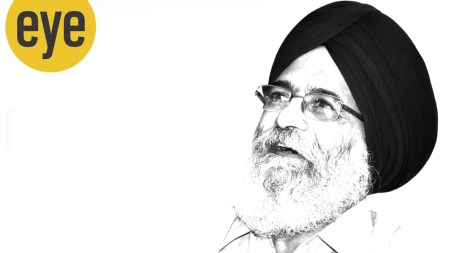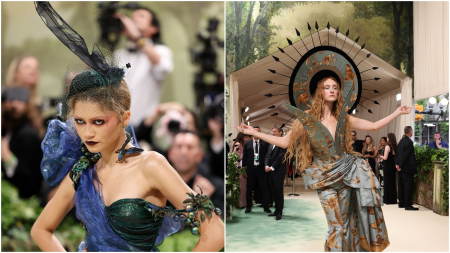- India
- International
Behind the Art: How David’s ‘Leonidas at Thermopylae’ captures the soul of Sparta
Behind the Art: Leonidas at Thermopylae by Jacques-Louis David immortalises a defining moment in ancient Greek history. The battle has inspired several works of art over time including the 2006 film "300" - an epic action movie, and more.
 Leonidas at Thermopylae, Jacques-Louis David, 1814. (Source: Wiki Art)
Leonidas at Thermopylae, Jacques-Louis David, 1814. (Source: Wiki Art)In 1814, French painter Jacques-Louis David unveiled his monumental artwork titled ‘Leonidas at Thermopylae’, which left the world astonished. This impressive masterpiece, measuring approximately thirteen feet by seventeen and a half feet, was the culmination of nearly fifteen years of dedicated work by the artist. With painstaking attention to detail, David transported viewers back in time to the legendary Battle of Thermopylae, which took place in 480 BCE. At the heart of the painting stands Spartan King Leonidas, poised for the imminent clash with his fellow warriors. The backdrop of the narrow mountain pass of Thermopylae adds to the dramatic effect, highlighting the strategic significance of the location in the battle. The battle has inspired several works of art over time including the 2006 film “300” – an epic action movie that draws inspiration from Frank Miller and Lynn Varley’s fictionalised comic series of the same name.
How did David skillfully capture the essence of bravery, unity, and the indomitable spirit of ancient Greece through this artwork and why is it so famous?
Historical Context, The Battle of Thermopylae and Leonidas I
The Battle of Thermopylae was a historic clash between the Greek city-states, led by King Leonidas of Sparta, and the Persian Empire of Xerxes I. Despite being vastly outnumbered, the Greeks held off the Persian army at the narrow pass of Thermopylae for three days. Though they were eventually defeated, the battle showcased the power of a patriotic army defending their homeland. The story of Leonidas and his 300 Spartans fighting to the death has become a symbol of courage against overwhelming odds. Leonidas I, the legendary warrior king of Sparta, commanded the allied Greek forces in their valiant last stand at the Battle of Thermopylae in 480 BC. Before the battle, it is said that his wife Gorgo sought his counsel on what to do in his absence. In response, Leonidas advised her to marry a virtuous man, have children, and live a fulfilling life. This exchange highlights the courage and sacrifice of Leonidas, as well as the strength and wisdom of his beloved queen, Gorgo.
The Artistic Mastery of Jacques-Louis David
Leonidas at Thermopylae by Jacques-Louis David immortalises a defining moment in ancient Greek history. Set against the backdrop of the treacherous mountain pass, this epic painting captures the heroic stance of Spartan King Leonidas just before the Battle of Thermopylae in 480 BCE. As the invading Persian forces loom, Leonidas and his warriors stand firm, ready to make their last stand in defence of Greece.
Thermopylae, known as “The Hot Gates,” provided the Greeks with a strategic advantage. The narrow passage allowed them to hold off the larger Persian army, buying precious time for the Greek city-states to organise a successful resistance. Leonidas’ courageous sacrifice has become legendary, inspiring not only the Greeks of that era but also artists like Jacques-Louis David. Prior to executing the final oil on canvas composition of ‘Leonidas at Thermopylae’, Jacques-Louis David diligently created numerous sketches. One particular sketch, dating back to 1814, serves as a compositional study, which was completed in two separate parts. However, this approach resulted in a somewhat fragmented and overly worked final result.

Amidst the chaotic backdrop of war preparations, David skillfully portrayed Leonidas as the focal point of the painting. Bathed in light, he exudes strength and determination, with his gaze turned upward in contemplation of the impending battle. The classical ideals of male virtue and beauty are showcased through the depiction of these historical Greek warriors. In the background, a soldier etches a message into the rock, a testament to Leonidas and his comrades’ bravery and unwavering loyalty. As viewers take in the grandeur of the painting, they are reminded of the ultimate sacrifice these warriors were prepared to make for their homeland.
Criticism and Artistic Style of David
Jacques Louis David, a prominent figure in Neoclassicism, shaped the art scene in late eighteenth and early nineteenth-century France. His paintings, characterised by precise lines, sculpted forms, and polished surfaces, often conveyed moral messages through historical subjects. Throughout his career, David served various patrons, from royalty to revolutionaries and even an emperor. Leonidas at Thermopylae was completed in 1814, coinciding with Napoleon’s downfall following the disastrous Russian campaign. The painting, conceived as early as 1798 during David’s creation of Intervention of the Sabine Women, evolved during a period of challenges to Davidian Neoclassicism’s dominance. Some of David’s students, such as Girodet, had already rebelled against his style and had achieved success with their alternative approaches. The Primitifs or Barbus, a group of David’s students, rejected the moralistic values of David’s classicism in favour of a simpler, purer style inspired by archaic Greek vase painting and early Renaissance art.
David’s Leonidas at Thermopylae and the artistic developments of his students reflect the dynamic and evolving artistic landscape of the time, as new ideas and styles began to challenge the established norms of Neoclassicism.
Leonidas at Thermopylae resonates beyond its historical significance. It serves as a symbol of defiance and valour in the face of overwhelming odds. Years later, in November 1819, the painting caught the attention of Louis XVIII, the king of France, who acquired it alongside another notable picture, ‘The Intervention of the Sabine Women’, for a substantial sum of 100,000 francs. This acquisition further solidified the painting’s significance and its place in art history.
Next up in Behind the Art: How Elizabeth Thompson captured the essence of courage and patriotism in her masterpiece “Scotland Forever!”
📣 For more lifestyle news, follow us on Instagram | Twitter | Facebook and don’t miss out on the latest updates!
More Lifestyle
May 19: Latest News
- 01
- 02
- 03
- 04
- 05


































